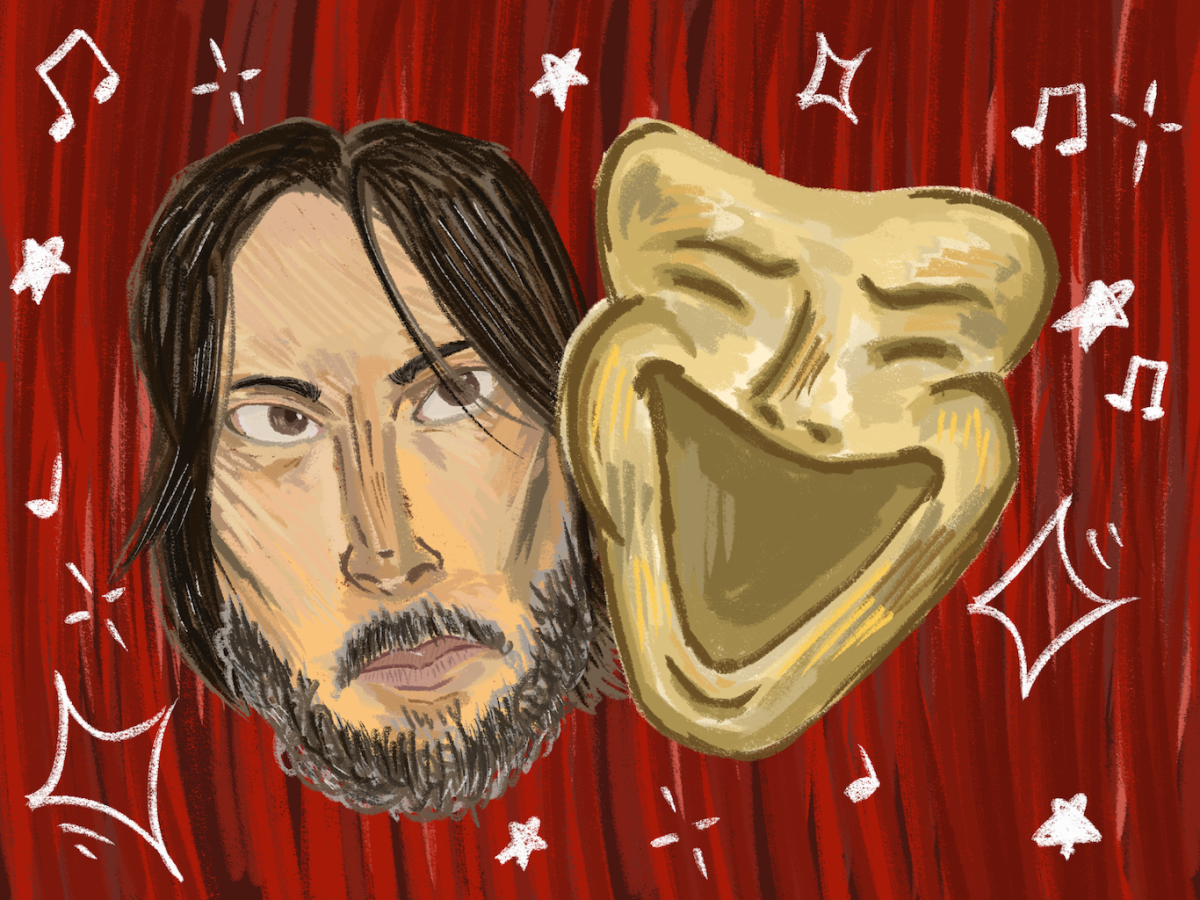I have never audibly sobbed in a movie theater before, but there’s a first time for everything.
I haven’t seen my mom since she died from cancer almost 10 years ago — an obvious statement, I know. She exists to me only in fragmented memories, dusty photo albums and grainy videos. But sitting in a dark, sticky-floored theater at the Angelika Film Center two weeks ago, my jaw dropped as director John Crowley’s “We Live in Time” began, and I saw a version of my mother again in Almut (Florence Pugh). She had the same palpable love for her daughter, beautiful connectedness with her husband and hopeful aspirations for continued life. The only difference was Almut’s British accent. The warmth my mother brought to life was contagious. She had the kind of effervescence that pervades everything — dancing in the kitchen and skipping down the aisles of the grocery store. As the credits rolled, I remained awe-struck at this vision of her on screen — mouth agape, stuck in my seat until long after it was socially acceptable to still be in the theater.
“We Live in Time” follows puppy-love couple Almut and her husband Tobias (Andrew Garfield) as they fall in love, have a child and navigate her cancer diagnosis. Almut is an independent, witty and career-driven woman living in London, and meets Tobias after accidentally hitting him with her car. Tobias is quiet, loving and immediately forgiving of the incident. The film splices together three timelines of Almut and Tobias’ relationship: when they met, their honeymoon phase and parenthood while battling Almut’s illness. Their journey is told through a nonlinear narrative, with each era discernable by differences in hairstyle and lighting changes.
Though it’s tempting to introduce a tragedy like a cancer diagnosis to a seemingly perfect couple and then make that the center of the film, Crowley masterfully creates a more nuanced experience. He begins the film with a tense Almut and Tobias in a doctor’s office receiving her cancer diagnosis. By opening with this — biting the bullet of what we know is eventually coming — he uses the rest of the film to fully develop Almut and Tobias’ story through the three timelines and ground the viewer in their relationship, not their tragedy. The scenes in doctor’s offices are sparse, with most of the film focused on Tobias and Almut’s untraditional birth story, meeting each other’s families and their journey trying to have their daughter Ella (Grace Delaney). Most of the scenes that do touch on cancer are surprisingly filled with joy, like Tobias and Ella shaving Almut’s head as she undergoes chemo and begins to lose her hair — a scene that concludes not with defeat or melancholy, but with selfies and laughter. I remember shaving my own mom’s head, a whole family affair with music and dancing as my mom debuted her new look.
For me, this emphasis on joy was the turning point of the story and what separates it from so many tragic films about cancer diagnoses. In “We Live in Time,” I saw my family’s story portrayed with refreshing accuracy. Cancer was not the focus of the film, or my life: love was. To see Almut, Tobias and Ella portrayed not as victims of tragedy but as fully developed characters with interests, passions and hope was magical.
Almut’s character is consistently expanded upon, and Tobias takes a more supporting role. Crowley focuses most non-couple camera time on Almut — following her attempts to balance work, family, love and Stage 3 cancer as she secretly works to compete in an international cooking competition while her health quickly deteriorates. When Tobias finds out about her plans, the film reveals its first bit of necessary conflict between the couple. They have a heated argument, crystalizing the most impactful bit of the film — deciding what to prioritize when everything is falling apart. Tobias surprisingly takes on the role of the antagonist and discourages Almut from competing until she reveals the legacy she wants to leave for Ella, delivering the heartbreaker of a line, “I can’t bear the thought of being forgotten.” Almut and Tobias’ dynamic is flirty and fun throughout the film, but with no contrast begins to feel stale, so this point of contention between them was refreshing.
This also proves different from the tired cancer tragedy trope by developing Almut as a full human, not a diagnosis. She has passions, and Crowley shows her balancing universal struggles like careers and motherhood. Cancer is only part of the story, just like how it was in my life. Though my mom was sick from when I was two to her death when I was eight, there is no part of me that views my childhood as sad. It was vivacious, filled with light and joy and love — just like my mom. Like Almut, she balanced her career, her relationship with my dad and raising me, and while navigating cancer was certainly part of the equation, it did not overshadow the beauty of childhood my parents created for me. Watching Tobias and Almut’s interactions with Ella was like seeing a window into my own life. Crowley perfectly encapsulated the realities of a close-knit family moving through life first, and a diagnosis second.
“We Live in Time” offers new insights to a tired trope of sad cancer stories. By focusing more on the relationship between Almut and Tobias than the challenges they face, the movie develops the idea of love as a force that transcends tragedy. As I sat in the theater with my empty popcorn bucket and empty tear ducts, I felt anything but empty. I felt seen. Heartbreaking and witty and realistic, this film is not a tragedy — it is an abundance of love.
Contact Rory Lustberg at [email protected].
























































































































































